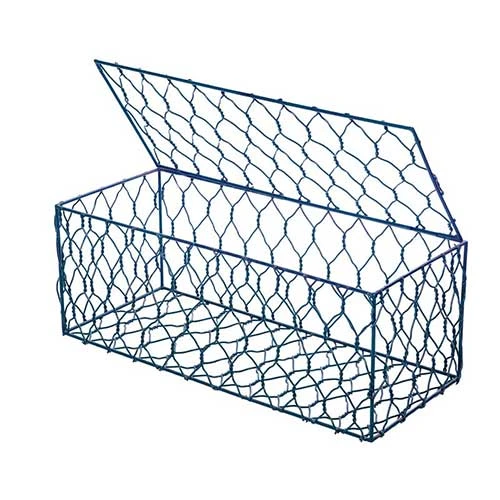-
 Phone:
Phone: -
 Email:
Email:

Alternative Designs for Rock Mesh Retaining Walls in Landscaping Applications
Understanding Mesh Rock Retaining Walls
In the realm of civil engineering and landscape architecture, retaining walls play a vital role in managing soil and water retention in various terrains. Among the various designs and materials used, mesh rock retaining walls have emerged as a popular choice due to their effectiveness in controlling erosion and their aesthetic appeal. This article explores the structure, benefits, and applications of mesh rock retaining walls, highlighting why they are favored in numerous construction projects.
What is a Mesh Rock Retaining Wall?
A mesh rock retaining wall is a structure that uses a network of mesh materials to hold back soil or rock. This system often involves the use of galvanized steel mesh or wire mesh constructed into a basket-like form. Stones or boulders are then filled into the mesh, creating a sturdy and permeable wall structure. This design allows for flexibility in terms of shape and size, making it adaptable to various terrains and environmental conditions.
The primary function of a mesh rock retaining wall is to prevent soil erosion and manage surface water runoff. By providing a structured barrier, these walls help to stabilize slopes and maintain the integrity of roadways, pathways, and landscaping features.
Benefits of Mesh Rock Retaining Walls
1. Erosion Control The mesh design offers excellent support for vegetation growth, which can help further prevent soil erosion. The stones within the mesh can be easily integrated with plant life, promoting a natural look while enhancing the wall’s functionality.
2. Drainage One of the standout features of mesh rock retaining walls is their ability to facilitate drainage. The open structure allows water to flow through, reducing hydrostatic pressure behind the wall. This drainage characteristic is crucial in preventing water buildup, which can lead to wall failure.
3. Aesthetic Appeal By using natural stones and allowing for vegetation to grow, mesh rock retaining walls can blend seamlessly into the natural landscape. This aesthetic advantage makes them ideal for garden settings, parks, and residential developments, where visual aesthetics are as important as structural integrity.
4. Sustainability Many mesh rock retaining wall systems utilize recycled or locally sourced materials, contributing to sustainable building practices. Additionally, the vegetation that can grow within these walls provides habitat for local wildlife and promotes biodiversity.
mesh rock retaining wall

5. Cost-Effective Compared to traditional solid retaining walls, mesh rock walls can be more economical to construct. The materials needed are often less expensive, and the installation process can be quicker, reducing labor costs.
Applications
Mesh rock retaining walls are employed in a variety of applications, including
- Transportation Infrastructure These walls are frequently used alongside roads and highways to stabilize steep slopes and prevent runoff from damaging the roadway.
- Landscaping Projects Gardeners and landscape architects often use mesh rock retaining walls to create terraced gardens or to delineate plantings in hilly areas, providing both function and form.
- Flood Control In areas prone to flooding, mesh rock walls can be designed to redirect water flow, protecting properties and preventing soil erosion during heavy rains.
- Slope Stabilization Natural terrains, such as hillsides and embankments, benefit from mesh rock retaining walls as they help to manage soil movement and maintain slope integrity.
Conclusion
Mesh rock retaining walls symbolize a harmonious blend of function and aesthetics in modern engineering. By providing effective erosion control, excellent drainage, and environmental sustainability, they serve various practical purposes while enhancing the beauty of their surroundings. As construction practices continue to evolve, mesh rock retaining walls will likely remain a favored option for managing earth retention on steep slopes. Whether in urban developments or rustic landscapes, these structures exemplify how engineering can coexist with nature, promoting both safety and beauty in the built environment.
-
Wire Mesh for Every Need: A Practical SolutionNewsJul.25,2025
-
Steel Fences: Durable, Secure, and Stylish OptionsNewsJul.25,2025
-
Roll Top Fencing: A Smart Solution for Safety and SecurityNewsJul.25,2025
-
Cattle Farm Fencing Solutions for Maximum SecurityNewsJul.25,2025
-
Affordable Iron Binding Wire SolutionsNewsJul.25,2025
-
Affordable Galvanized Wire SolutionsNewsJul.25,2025
-
Wire Hanger Recycling IdeasNewsJul.25,2025








